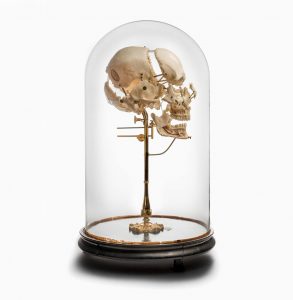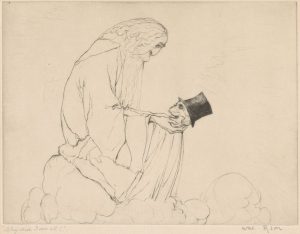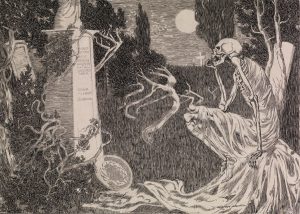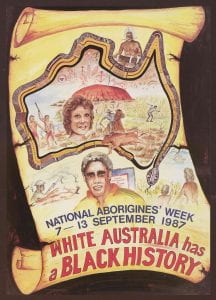Love and skulls: An exhibition loan to the Art Gallery of Ballarat
The exhibition Romancing the skull at the Art Gallery of Ballarat opened to the public on October 14th. Object loans from three of the University’s Cultural Collections (Harry Brookes Allen Museum of Anatomy and Pathology, Rare Books and the Baillieu Library Print Collection) are key features of this edgy and multi-layered show. The Nuremberg Chronicle, open to the image of the Dance of Death, and the exploded skull model by Tramond & Co. are some highlights.

The exhibition also reunites a husband and wife: the artists Will Dyson (1880-1938) and Ruby Lindsay (1887-1919). Dyson was born at Ballarat and Lindsay at nearby Creswick where they were later married. When Ruby Lindsay died from influenza, at the age of just 32, Will Dyson’s biographer said ‘The fire and sting went out of him from this time on.’ [1.] The two works on loan convey that their love for each other is as enduring as their imagery. Dyson wrote:
There is no soft beatitude in Death:
Death is but Death;
Nor can I find
Him pale and kind
Who set that endless silence on her
Death is but Death! [2.]
Romancing the skull is an exhibition both for lovers and for lovers of skulls. These enthralling objects will be on display in Ballarat until January 28th 2018.


References
Vane Lindesay, Australian Dictionary of Biography
Will Dyson, ‘Death is but Death’ in Poems in memory of a wife, [London: Cecil Palmer, 1919]

